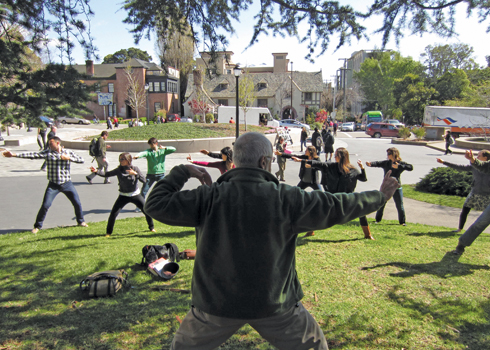Charles Halpern started by asking the Dean of Berkeley to consider introducing a law school course that incorporated the benefits of meditation practice on students practicing law.
What he got, a few years later, was a full mindfulness curriculum at the school—the first of its kind in the United States.
Some students who took Halpern’s first course—”Effective and Sustainable Law Practice: The Meditative Perspective”—described it as “the most important course they took in law school,” says Halpern. This new curriculum opens up the opportunity to deepen practice, both meditative and legal.
“If [students] conclude early on they want to have a career in which mindfulness is going to be a central element of how they practice law, they will be able to do so.” Halpern says the fact that students can be part of a mindfulness community during their legal education “is a big turning point.”
Halpern caught up with Barry Boyce, Mindful’s editor-in-chief, during the International Symposia for Contemplative Studies in Denver, Colorado, last year. Facilitated by the Mind & Life Institute, the symposia brought together a diverse group of researchers and scholars from all over the word to “explore the correlates and consequences of contemplative practice.”
Halpern says a handful of other law schools are beginning to offer courses integrating law and meditation, and he predicts they will have full-blown curriculums like Berkeley within the next six years.
Mindfulness, in some ways, has already gone beyond the university setting. Halpern says mindfulness is “ultimately beginning to affect the way judges make decisions and the way law is interpreted” and eventually, “legal doctrine itself will take on a more mindful dimension.” Halpern thinks Ohio congressman Tim Ryan is a good example of how mindfulness could enter into the law-making process, informing policies in the future.
Students in Charlie Halpern’s class “Effective and Sustainable Law Practice: The Meditative Perspective” practicing Qi Gong beside the law school







